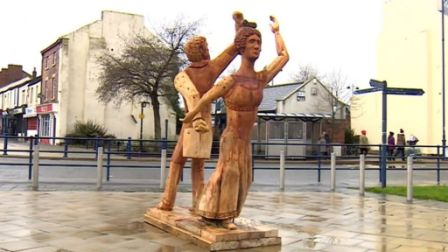…tried to prove her loving lord was mad,
But as he had some lucid intermissions,
She next decided he was only bad…

Seaham Hall, County Durham: Annabella’s childhood home, and where her marriage to Byron took place. He would be wryly amused to find that the address is now “Lord Byron’s Walk” and that it offers wedding packages!
Annabella Byron was not by any stretch of the imagination a sympathetic woman. She was the adored and pampered only child of elderly parents, and had grown up expecting to have her own way in everything. The result? A firm belief that her opinion was not only always right but was the only one that mattered.
Brought up as an Evangelical Christian a long way, both physically and mentally, from the urban environments which Byron preferred, she was hardly an ideal partner for a man who questioned everything, who was teasing and whimsical when his mental health was on an even keel, but who could quickly be plunged into black, despairing moods.
Annabella made it plain that she did not enjoy London society, yet when Byron began to go out alone she made her displeasure even plainer. She disapproved strongly of the theatre, and of her husband’s involvement with the Drury Lane Committee.
As the couple’s financial difficulties grew ever worse, and Byron, in despair, turned to drink, she decided that her life was in danger. When the only family member who showed any concern, Byron’s sister Augusta, moved in to care for him, Annabella became convinced that, not only did Byron love his sister more than he loved her, their relationship must be incestuous.
She kept a journal, where his faults were noted,
And opened certain trunks of books and letters,
All of which might, if occasion served, be quoted…

This statue of Byron and Annabella, intended to show them dancing away from each other in opposite directions, was unveiled in Seaham last week. (The sculptor obviously wasn’t aware that, conscious of his lame leg, Byron never danced!)
In January 1816, back home with her adoring parents, Annabella shared her unhappiness with them. Her mother instantly set out for London, consulting a leading lawyer and Byron’s physician. The physician stated that Byron was not mad; the lawyer advised a legal separation. On 2nd February 1816, Byron received a letter by private messenger, informing him that his marriage was over.
Byron wrote a dignified reply to Annabella’s father, and a confused, despairing letter to his wife; but Annabella stuck to her assumed moral high ground,
And saw his agonies with such sublimity,
That all the world exclaim’d, “What magnanimity!”




